Understanding Employee Value Propositions: The Key to Engaging and Retaining Talent

An Employee Value Proposition (EVP) is the unique set of benefits an organisation offers its employees in exchange for their skills and contributions. It goes beyond compensation, encompassing all that makes the company attractive to both current and potential employees. A clear and compelling EVP aligned with company values boosts engagement, retention and employee advocacy, setting the business apart in a competitive job market. When employees value the EVP, they are more committed, become brand advocates and contribute to better business performance.
The Five Pillars of a Strong EVP
A strong EVP is built around five key pillars: Compensation, Career Development, Work-Life Balance, Company Culture, and Purpose and Mission. Let’s take a closer look at each of these and explore how to effectively implement them within your business.
1. Compensation: More Than Just a Paycheck
Compensation is the foundation of any EVP. It includes base salary, bonuses, benefits and other forms of financial rewards. While it might seem straightforward, compensation is about more than just a number on a paycheck – it’s about recognising and rewarding employees for their hard work.
What This Looks Like:
- Competitive salary packages
- Bonuses, profit-sharing or stock options
- Additional super payments, health insurance and other perks
How to Enhance Compensation Strategies:
- Conduct regular salary benchmarking to ensure your offerings are competitive within the industry.
- Offer performance-based bonuses or rewards that recognise individual and team achievements.
- Introduce unique perks such as wellness allowances, paid gym memberships or discounted insurance products to make your compensation package stand out.
2. Career Development: Growing with Your Team
Employees today are looking for opportunities to learn and grow. Career development is all about providing the tools, resources and opportunities that help employees progress in their careers and develop their skills. It signals to employees that their personal and professional growth is valued.
What This Looks Like:
- Clear career progression paths
- Regular training and development programs
- Mentorship opportunities
How to Boost Career Development:
- Invest in continuous learning opportunities, from workshops to online courses, that help employees develop new skills.
- Set up structured career paths with clear milestones for promotions and growth.
- Encourage internal mobility by promoting from within and offering cross-departmental learning experiences.
3. Work-Life Balance: Supporting Personal Well-Being.
Work-life balance has become one of the most sought-after elements in today’s job market. Employees want to know that their personal lives will be respected and that they won’t be expected to sacrifice their well-being for the sake of work.
What This Looks Like:
- Flexible working hours
- Remote work options
- Generous holiday and personal leave policies
How to Foster Work-Life Balance:
- Implement flexible working arrangements such as hybrid schedules or fully remote roles to give employees greater control over their time.
- Offer mental health support through Employee Assistance Programs (EAPs) or wellness initiatives that help employees manage stress.
- Encourage a culture of taking time off, ensuring employees feel comfortable using their vacation days to recharge.
4. Company Culture: The Heart of the Workplace
Company culture is about how it feels to work at your organisation. It encompasses the values, beliefs and behaviours that define your workplace environment. A strong, positive culture fosters collaboration, innovation and a sense of belonging.
What This Looks Like:
- A collaborative, supportive team environment
- Recognition and appreciation programs
- Opportunities for social interaction and team bonding
How to Build a Positive Culture:
- Establish recognition programs where employees can be publicly acknowledged for their contributions, both big and small
- Create opportunities for team bonding, whether through regular social events, off-site retreats or company-sponsored activities.
- Be intentional about diversity and inclusion initiatives, ensuring that every employee feels valued and respected.
5. Purpose and Mission: Making an Impact
Employees want to feel like their work is meaningful and that they’re contributing to something bigger than themselves. Purpose and mission give your workforce a sense of direction and help align their day-to-day activities with the broader goals of the organisation.
What This Looks Like:
- A clear company mission and values that employees can rally behind
- Opportunities for employees to engage in meaningful work
- Corporate social responsibility (CSR) initiatives
How to Strengthen Purpose and Mission:
- Clearly communicate your company’s mission and values to employees and demonstrate how their roles contribute to the bigger picture.
- Encourage employees to get involved in social impact initiatives or volunteer opportunities, reinforcing the company’s commitment to giving back.
- Make sure employees understand how their work directly impacts the success of the company and its mission.
Crafting an effective Employee Value Proposition is a powerful way to create a thriving workplace where people want to stay, grow and succeed. By investing in the five key pillars compensation, career development, work-life balance, company culture and the business purpose and mission – you’ll be well on your way to fostering an engaged, motivated and loyal team while positioning your company as a top employer in the marketplace. After all, when employees are happy and supported, everyone wins.
Team Bonding is renowned for creating and managing fun, unique and customised team building events. We facilitate rewarding and laughter filled activities for corporate and private groups across Australia.
- 1300 GO TEAM (1300 468 326)
- director@teambonding.com.au
© TEAM BONDING 2021 / All Rights Reserved. Designed by IT Company
Privacy Overview
| Cookie | Duration | Description |
|---|---|---|
| cookielawinfo-checkbox-analytics | 11 months | This cookie is set by GDPR Cookie Consent plugin. The cookie is used to store the user consent for the cookies in the category "Analytics". |
| cookielawinfo-checkbox-functional | 11 months | The cookie is set by GDPR cookie consent to record the user consent for the cookies in the category "Functional". |
| cookielawinfo-checkbox-necessary | 11 months | This cookie is set by GDPR Cookie Consent plugin. The cookies is used to store the user consent for the cookies in the category "Necessary". |
| cookielawinfo-checkbox-others | 11 months | This cookie is set by GDPR Cookie Consent plugin. The cookie is used to store the user consent for the cookies in the category "Other. |
| cookielawinfo-checkbox-performance | 11 months | This cookie is set by GDPR Cookie Consent plugin. The cookie is used to store the user consent for the cookies in the category "Performance". |
| viewed_cookie_policy | 11 months | The cookie is set by the GDPR Cookie Consent plugin and is used to store whether or not user has consented to the use of cookies. It does not store any personal data. |
| viewed_cookie_policy | 11 months | The cookie is set by the GDPR Cookie Consent plugin and is used to store whether or not user has consented to the use of cookies. It does not store any personal data. |

